The P1 SIM Mistral pedal set is designed to offer the precision and consistency needed to master the braking dynamics of the Oreca LMP2. These pedals provide refined control over your braking curve, essential for meeting the high-speed demands of an LMP2 car. With this level of modulation, every braking zone becomes an opportunity to optimize weight transfer and carry optimal speed into corner entries, all while managing the absence of ABS. Whether you’re aiming for a fast lap at Interlagos or managing traffic during an endurance race, the Mistral pedals deliver a race-ready feel that helps you unlock the full potential of your LMP2 car.
The Interlagos Circuit: A Technical Challenge
Autódromo José Carlos Pace
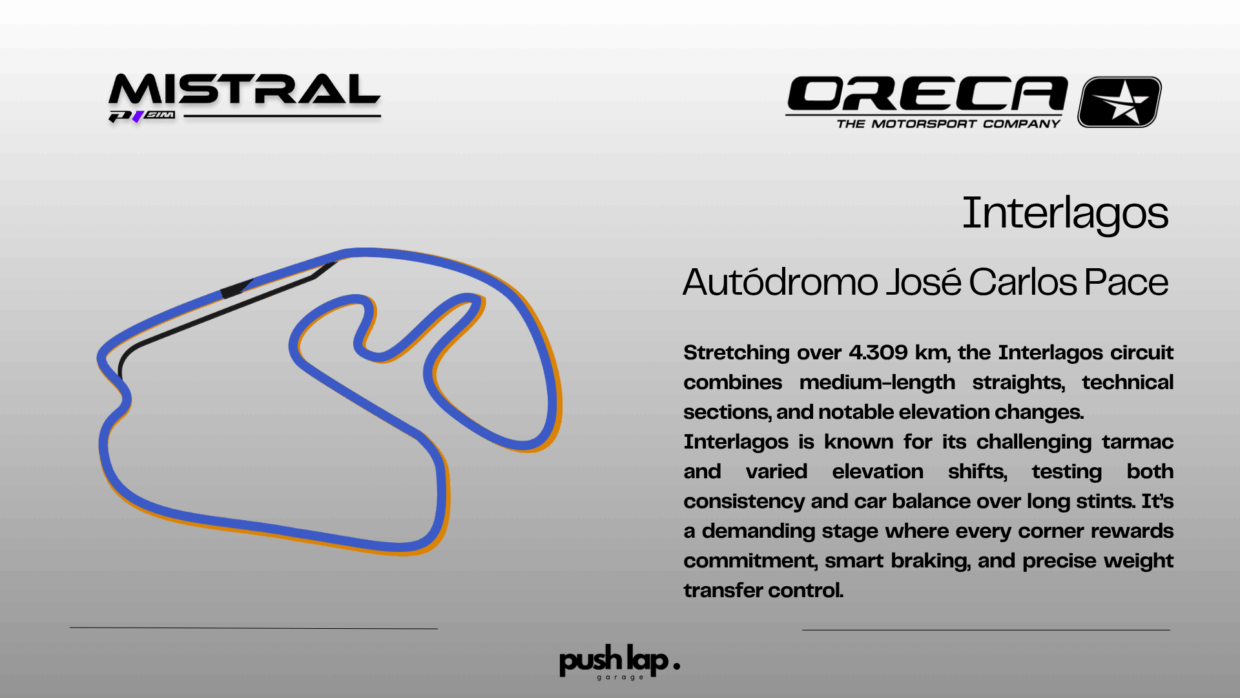
Stretching over 4.309 km, the Interlagos circuit combines medium-length straights, technical sections, and notable elevation changes. Known for its challenging tarmac and varied elevation shifts, this circuit tests both consistency and car balance over long stints. It’s a demanding stage where every corner rewards commitment, smart braking, and precise weight transfer control.
Brake Rubbers
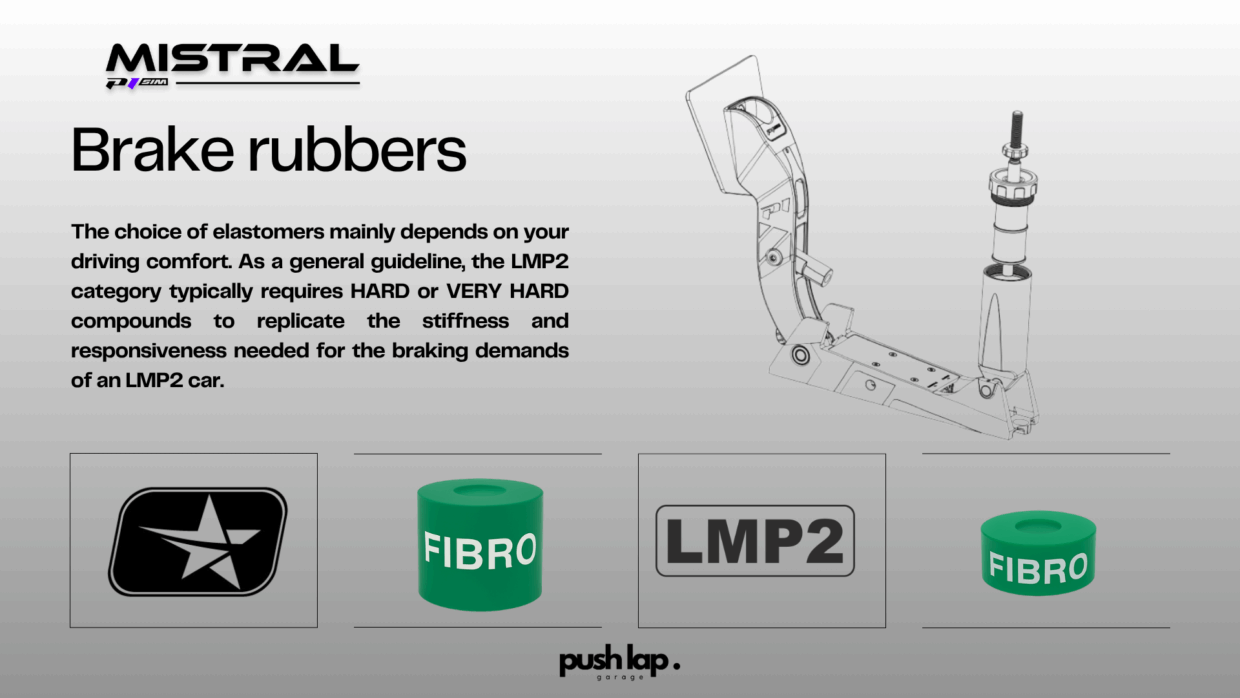
The choice of elastomers mainly depends on your driving comfort. For the LMP2 category, HARD or VERY HARD compounds are typically recommended to replicate the stiffness and responsiveness needed for the braking demands of an LMP2 car. This setup helps achieve the precise pedal feel necessary for managing high-speed braking zones and maintaining stability throughout endurance races.
Braking Strategy: When Control Becomes Your Ally
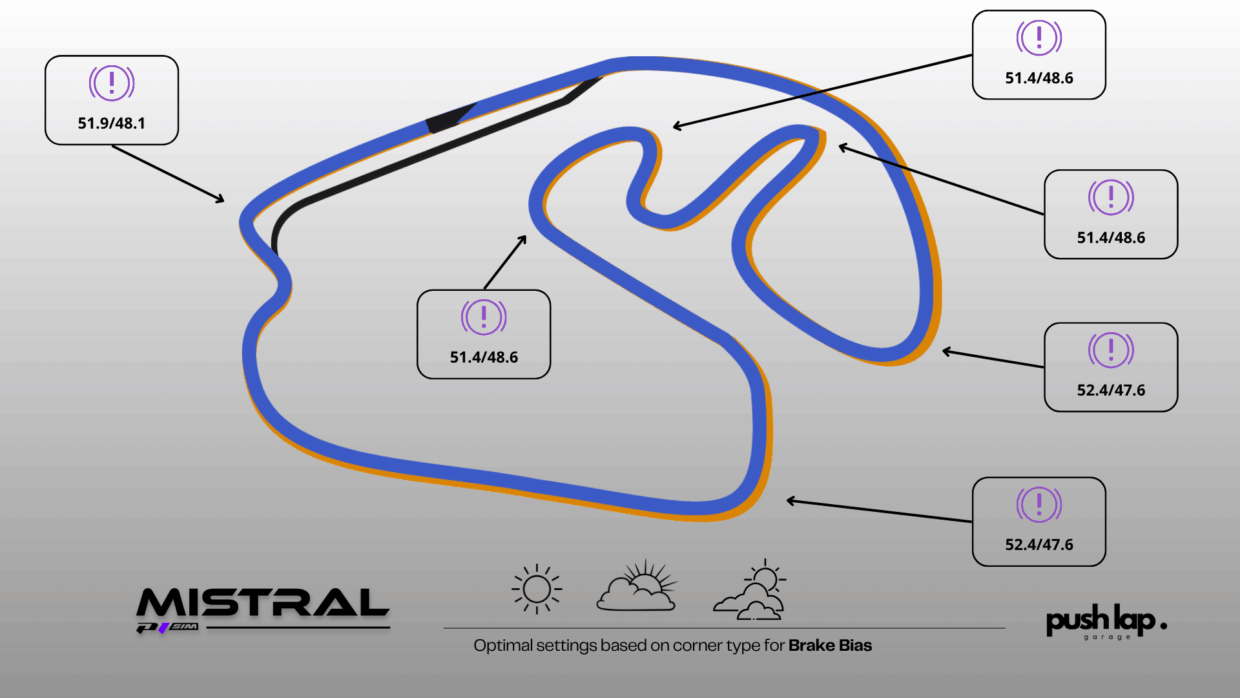
Mastering the brake bias is crucial when driving the Oreca LMP2, as it directly influences how effectively you can manage the car’s balance and performance during braking. The Oreca LMP2, with its focus on mechanical grip and aerodynamic efficiency, requires precise brake bias settings to optimize weight transfer and maintain stability. Adjusting the brake bias allows you to control how much braking force is distributed between the front and rear axles, which is essential for achieving maximum cornering speed and stability. In sim racing, fine-tuning the brake bias brings you closer to the authentic experience of prototype endurance racing, where control and consistency are key to performance. Every adjustment to the brake bias is an opportunity to enhance balance and unlock potential lap time in the high-speed world of LMP2 racing.
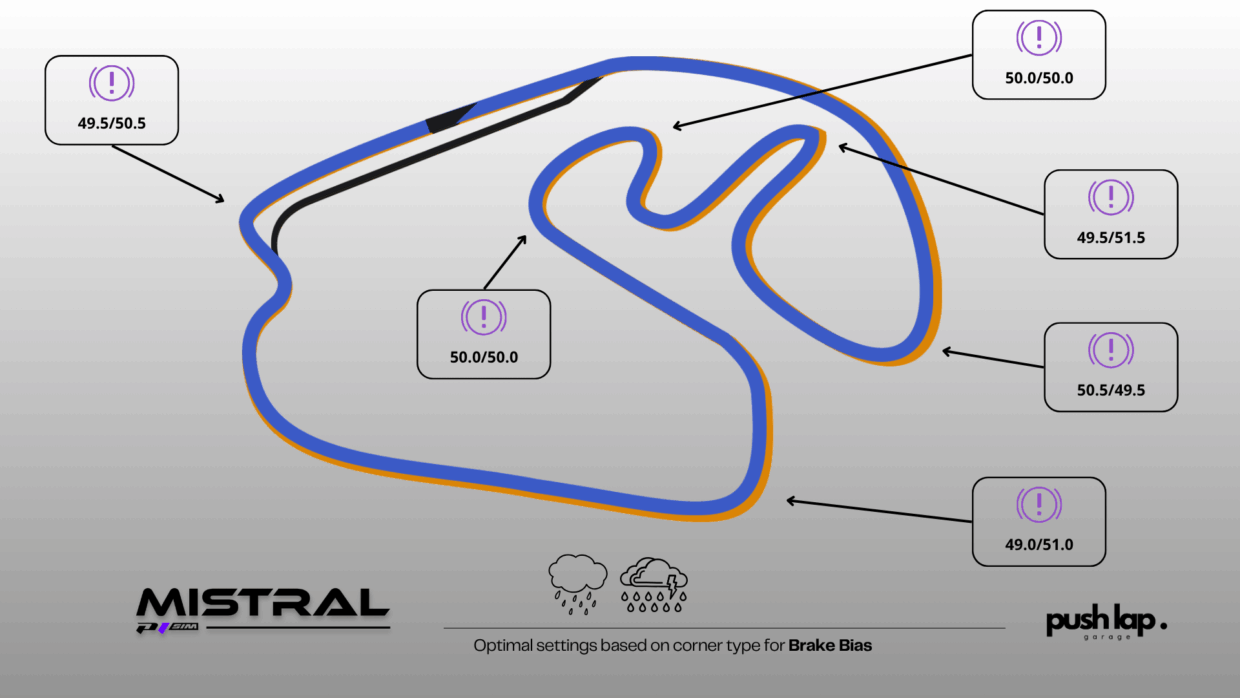
Force Feedback: The Foundation of Control
In-Game Settings
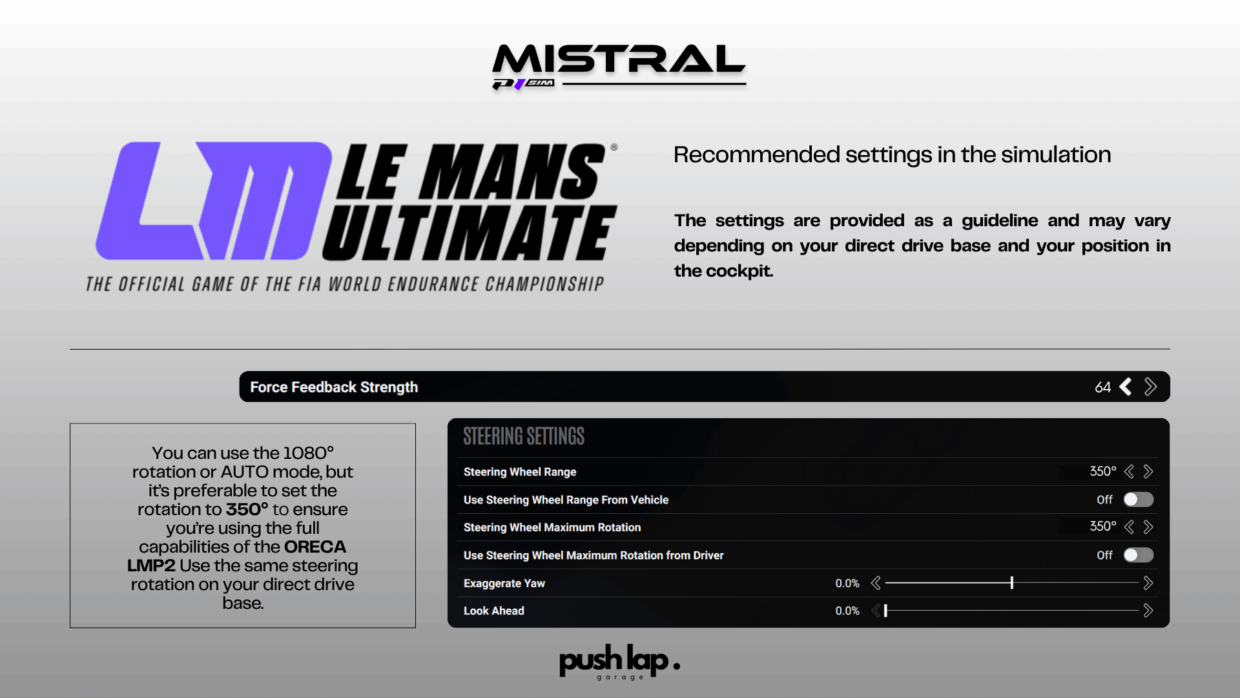
A good force feedback starts with clean signals from the simulation. In Le Mans Ultimate, avoid overly filtered or damped settings that can blur the subtle weight transfers and grip cues of the Oreca LMP2. Reduce in-game FFB strength slightly to let your base handle the power delivery cleanly, and adjust the steering rotation to match the actual behavior of the car. This ensures a direct and connected feel.
Direct Drive Base Configuration
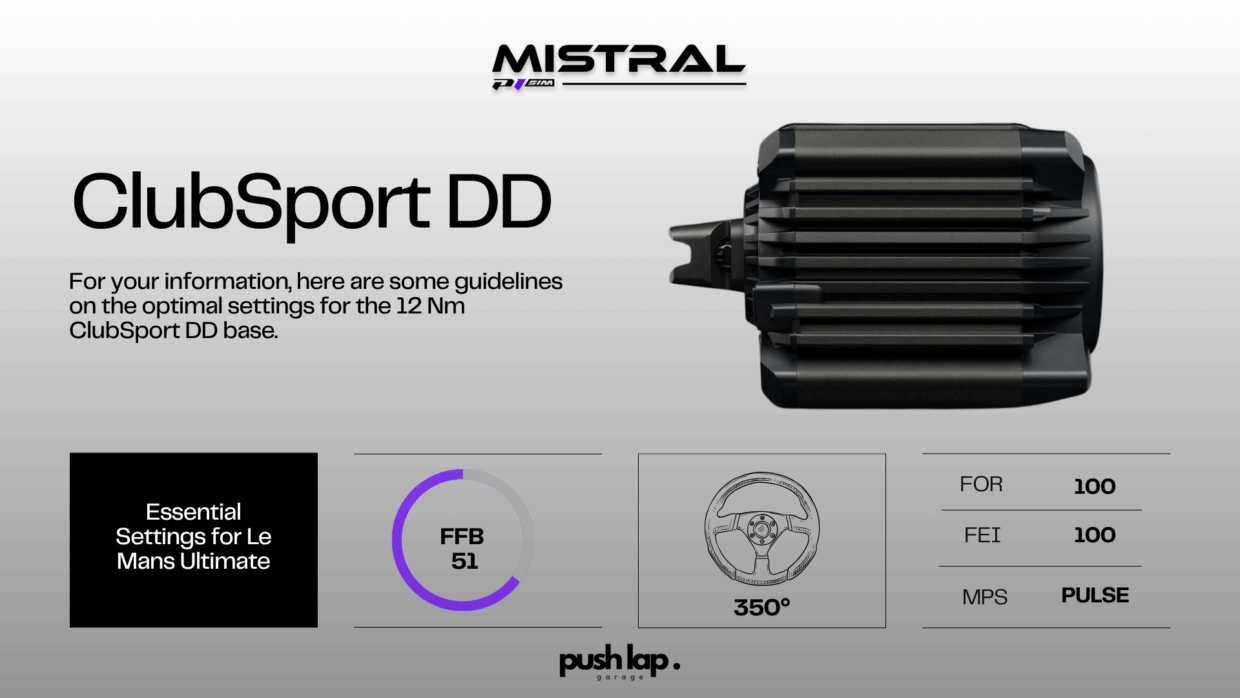
On the hardware side, the settings on your Direct Drive base are key to delivering sharp, readable feedback. We recommend using high FEI (Force Effect Intensity) values to keep the sensations crisp, and a filter value low enough to preserve detail during braking and corner entry. Increasing the overall torque on your base allows you to feel more of the car’s balance shifts without saturating the motor. Combine this with low damping and natural friction to maintain precision.
Driver Position & Seat Adjustments
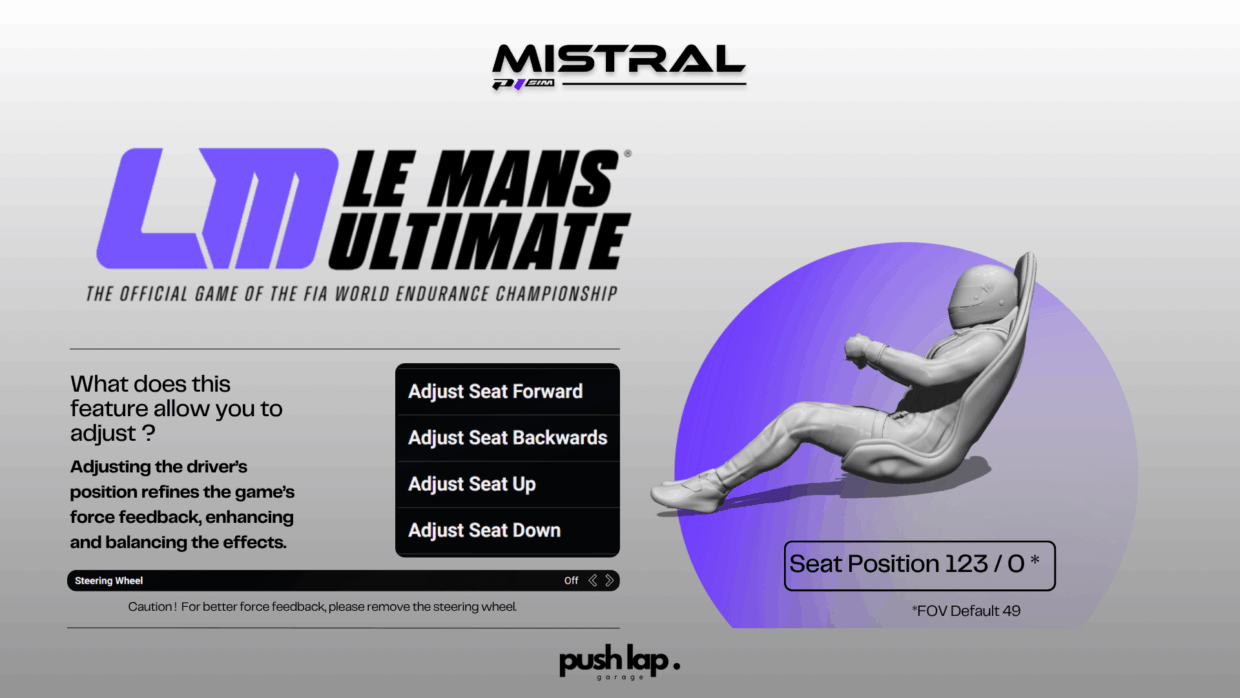
The final, often underestimated, factor is your driving position. In simulation, your virtual seat position impacts the way FFB is perceived—especially on setups with motion systems or transducers. Raising or lowering the seat slightly in-game, or shifting it back, can alter the FFB’s balance between front and rear reactions. Physically, make sure your real seat and pedal alignment allow for stable leg pressure and full modulation. A balanced position enhances not just comfort, but clarity in braking phases.
Calibration: Achieving Optimal Brake Pressure
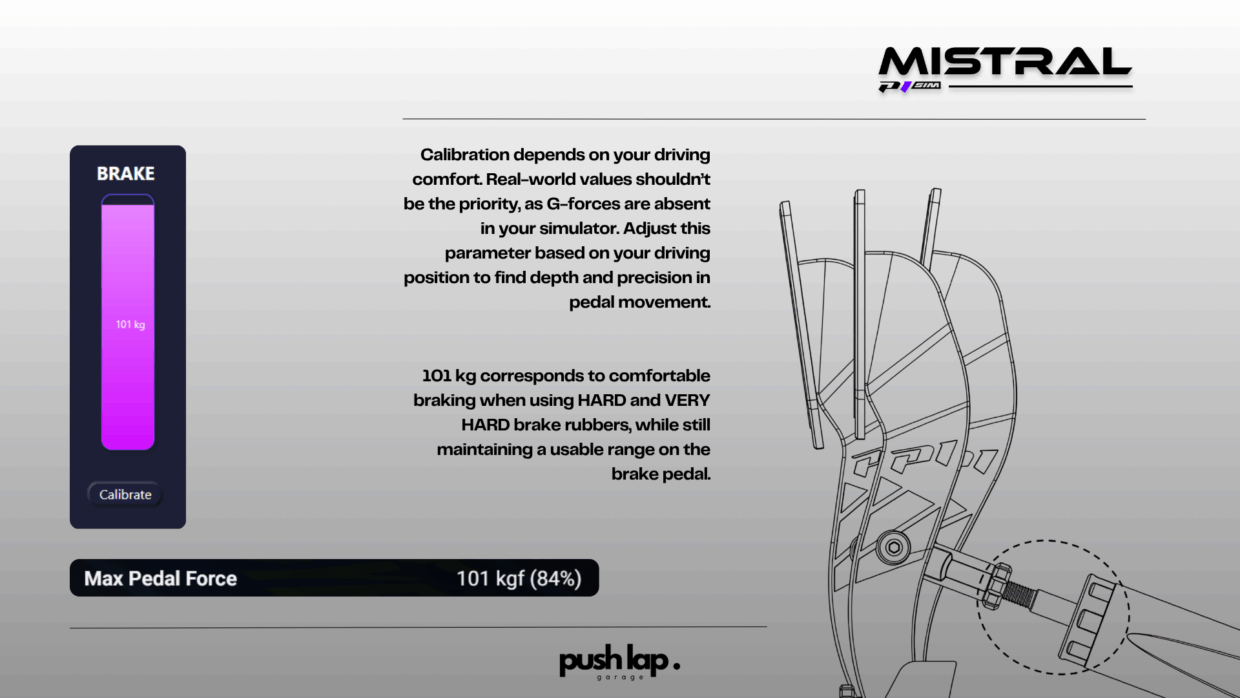
Calibrating your brake pedal to match your driving style and physical setup is vital. Aim for a pressure that allows for precise modulation without causing fatigue. This ensures consistent performance, especially during extended stints where maintaining concentration and control is paramount.
Brake Curve Phases: Application at Interlagos
- Point 1: Initiate braking with a smooth but firm press to stabilize the car. This phase is essential in corners like Turn 1 (Senna S) and Turn 4 (Pinheirinho), where early stability improves efficiency without overloading the front tires.
- Points 2 and 3: Continue decelerating with slightly reduced pedal pressure to stabilize the car. This middle phase helps in technical zones like Turn 12 (Juncao), where abrupt weight shifts can lead to understeer or lockups. The curve is designed to preserve front grip while allowing continuous energy management.
- Point 4: Increase pedal pressure if needed to adjust for grip loss or tighten your braking line—especially useful in corners like Turn 15 (Arquibancadas), where a final burst of braking control is key. This phase ensures you maintain mechanical balance as you transition from braking to corner entry.
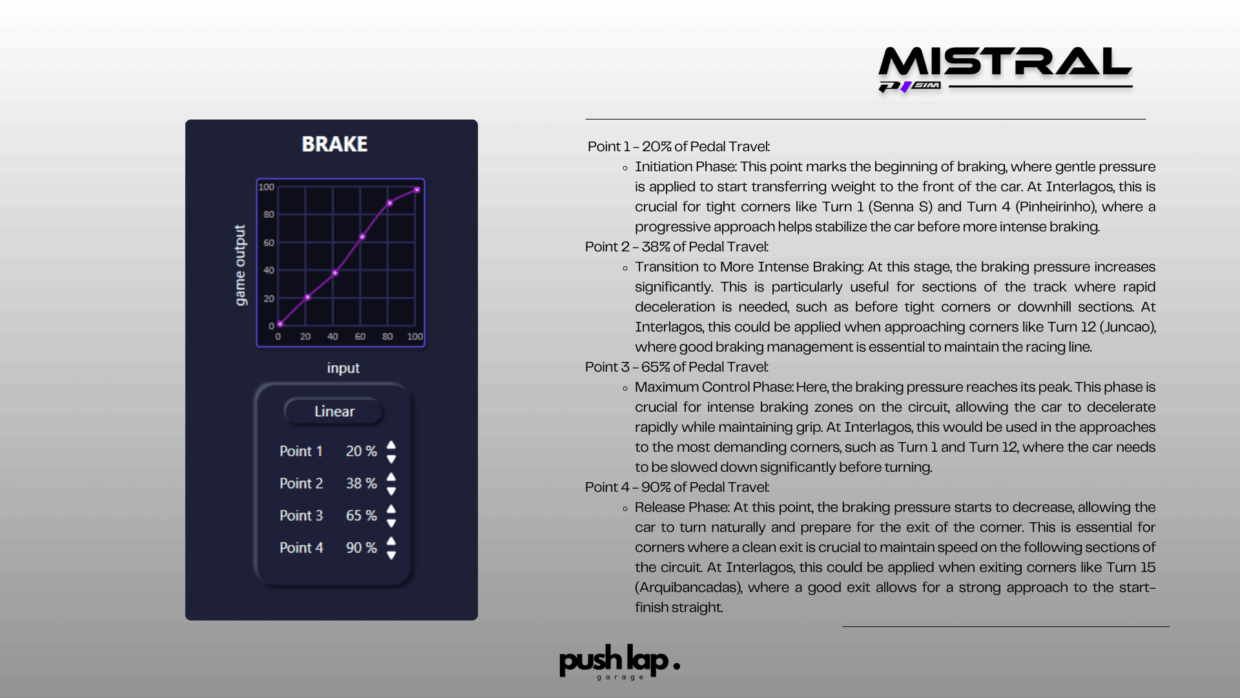
Conclusion: Harnessing the Oreca LMP2's Potential
The Oreca LMP2’s advanced aerodynamic design and mechanical grip offer a distinctive driving experience in Le Mans Ultimate. By fine-tuning your P1 SIM Mistral pedal setup and understanding the car’s energy dynamics, you can unlock its full potential on the demanding Interlagos circuit.
For a detailed visual representation of the brake curve and energy strategies, refer to the accompanying PDF guide.

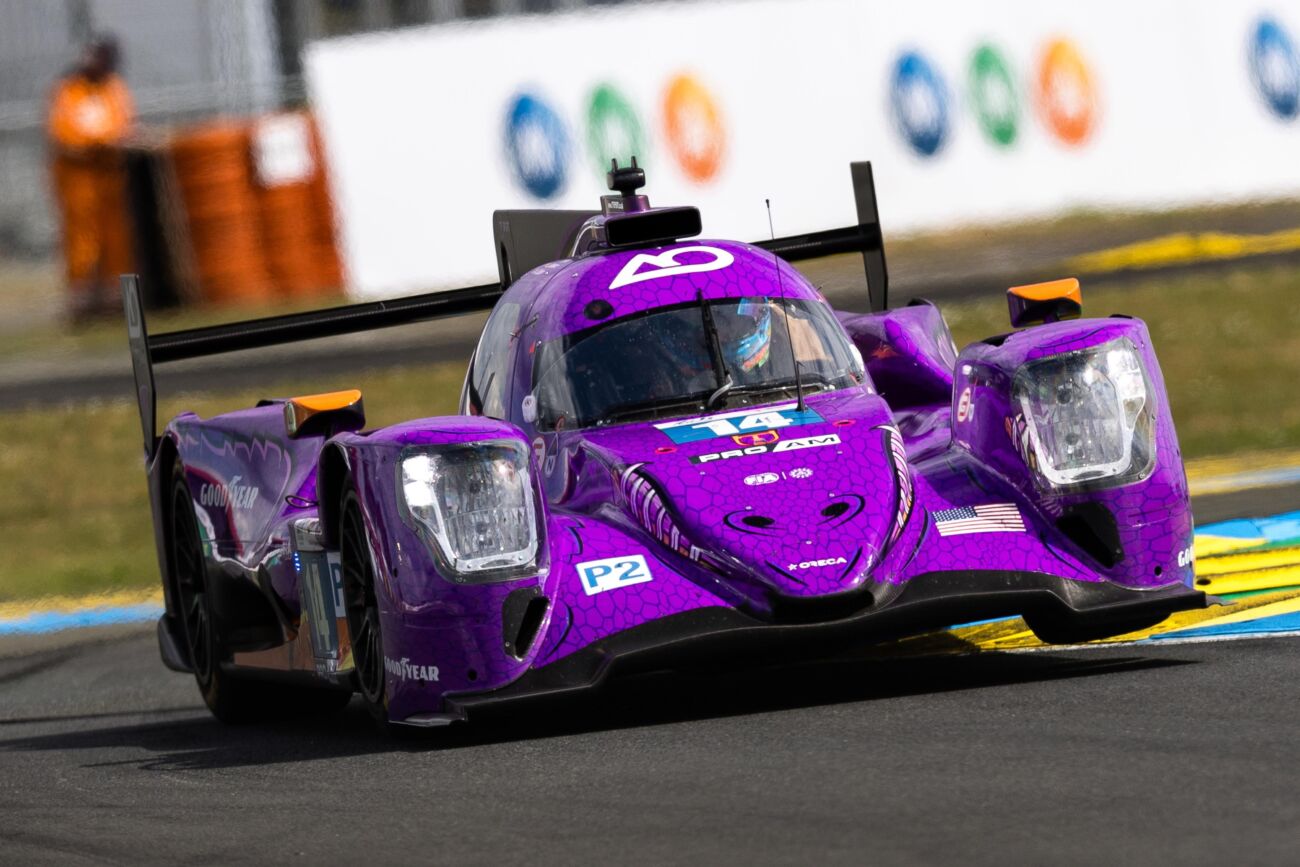
Leave a Comment